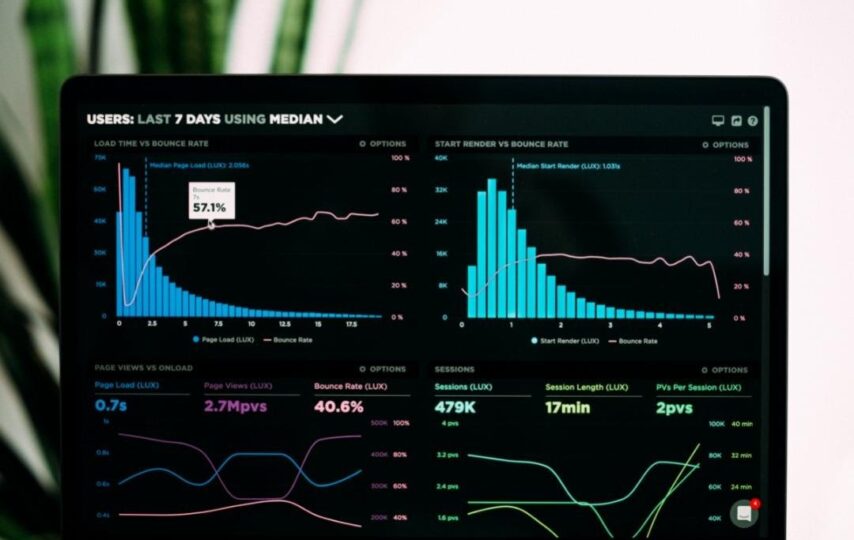Mobile app development is a demanding venture. Businesses often spend tons and tons of resources trying to develop a mobile app but often fail to generate the level of success they aim for. Part of it is because the app market is ultra-competitive, but this is also the case because many companies fail to accurately judge their app’s performance and improve on their weaknesses.
Developing and launching a solid mobile app is only a part of the solution for unlocking mobile success, the other half in building upon what you’ve already done by tracking how your app performs and improving on it.
No app is perfect straight out of release, and much of your success depends on strategic iterative development and incorporating customer feedback. It’s the reason why MVPs are so helpful and why you should be meticulously tracking every aspect of your app’s performance and usage.
And although it is advisable to gather as much data as possible concerning your app’s performance, it is much more effective to isolate and focus down on a few key metrics at a time to make the most out of your app. In this post, I want to discuss a few important KPIs that every app developer needs to pay attention to and talk about a few ways in which they can be improved.
For the sake of clarity, I’ve clubbed these KPIs into general categories to help us better understand why they are important and what role they play in our app’s success.
General and Usage KPI
Downloads and Uninstalls
These are fairly obvious. When you build an app, you need to keep track of the number of people downloading and uninstalling your app. Simply doing this can give you a lot more crucial information about your app than you think. For instance, if you notice a surge in downloads posts a new marketing initiative, you know you are doing it right. If you notice bulk uninstalls after a specific update or change, you know what went wrong.
User growth rate
The next logical indicator to measure is to consider your month-over-month growth rate. This is simply derived by subtracting last month’s active users from the current month’s users then dividing by last month’s users again. Multiply the answer with hundred, and you have your app’s growth percentage over the previous month. It is the most common way to talk about your app’s growth, and thus something developers have to measure.
Device, OS, and other Demographic data
Next up, we have some more general indicators concerning your audience. These include the likes of what devices do your users use; are they primarily tablet users or mobile users? Do you have more Android users? Or iOS? If your app performs poorly with a certain OS, you might want to optimize it for the specific platform. Even other demographic data like age groups, location, etc., can go a long way with informing you about how to improve your app to serve your users better. For instance, mobile app development companies USA can cater to local audiences better by personalizing their app’s content based on the user’s location.
Performance KPIs
App Load time
Now let’s move onto performance indicators. The first and the most important one here is your app load time. Basically, it’s the time between the user tapping the app icon and the apps becoming fully usable. Ideally, you want the load time to be as low as possible. Most users are likely to abandon an app if it takes too long to load up. Thus it’s worth tracking your load time across various devices, trying to reduce it to the lowest possible.
Crashes
Crashes can absolutely destroy an app’s chances of success. They could happen for a lot of reasons, maybe your app is too complex, or the new update you put out doesn’t sit well with some of the older OS versions out there. Basically, a lot can go wrong, so it is important to keep an eye on your app’s crash reports. They’ll tell you when your app crashes, on what devices it does so the most, and even what specific part of the app is causing the problem. Ignoring crashes will spell disaster for your app’s adoption and retention.
API Latency
This is closely related to App load time but slightly more complex. API latency is the time taken between your API proxies being called and the responses generated to them. As apps continue to get complex and depend heavily on the device’s native capabilities, more APIs get utilized, and thus, it is critical for developers to check and optimize them.
Financial KPIs
Customer acquisition cost
This is basically the amount you spend on getting a new customer. It is calculated by dividing the total gross profit by the amount spent on marketing, promotions, and other acquisition channels. This is an important metric to track because ideally, you have a ton of channels via which users can discover your app. However, you want to double down on the cheapest and effective ones while improving those that do not generate satisfactory returns.
Lifetime value
This can be calculated both for the users as well as the app. For your app’s lifetime value, simply divide the total revenue thus far with your total expense. This gives you a basic idea of how your app has performed since its conception. To calculate your average user lifetime value, consider the total revenue a customer generates vs. the average cost of acquisition. Needless to say, apps try to maximize their customer lifetime value by acquiring new valuable leads and retaining older ones.
Engagement KPIs
Retention Rate
Arguably one of the most important indicators to keep an eye on, retention rate tries to gauge how well your app can hold your users. It’s basically the percentage of users who still use your app after installing it a while ago. Consider a time period for which you would like to calculate your app’s retention rate. Ignore the new users acquired within this time period and divide the users at the end of the time frame with the number of users at the beginning of the time frame. Multiply the figure with one hundred, and you’ll get the percentage of active users you retained through the selected time frame.
App sessions and session lengths
Apps sessions are fairly very straightforward; it’s the number of times users engage with your app. Depending on your specific app, a ‘section’ could mean different things, but generally, one section corresponds to the duration between launching and closing an app. Beyond just the number of sessions, we also need to consider your average session length and session productivity. Meaning, tracking how long each session is (the longer your average session length, the better) and tracking how much revenue and engagement sessions produce on an average. Optimizing your session productivity for maximizing revenue should be your goal for making the most out of your mobile app user base.
Conclusion
Building a mobile app is difficult but driving it to success is even more challenging. There is a lot of work that goes into tracking, testing, and improving your mobile app’s performance post-launch. What we discussed above is by no means an exhaustive list, but these are important indicators that apps absolutely cannot ignore. Thus, while building and running your mobile app business, ensure you take into account these and any other relevant KPIs.
All of this can be overwhelming and a bit too much to juggle at once, especially for small businesses lacking the technical expertise to run a fully-fledged app business. In times like these, it is okay to get some extra help. Goodfirms has curated a list of top mobile app development companies to help you with your development projects.
Regardless of how you choose to build and run your business, remember that tracking your performance and consistently improving on your weak point is the only way forward. What KPIs are you excited to measure?
Author Bio: Darren Mathew is passionate about Tech, Business, and the evolving relationship between the two. He is a blogger at GoodFirms – a leading review and rating platform that lets consumers compare and choose the right service provider for their needs.








